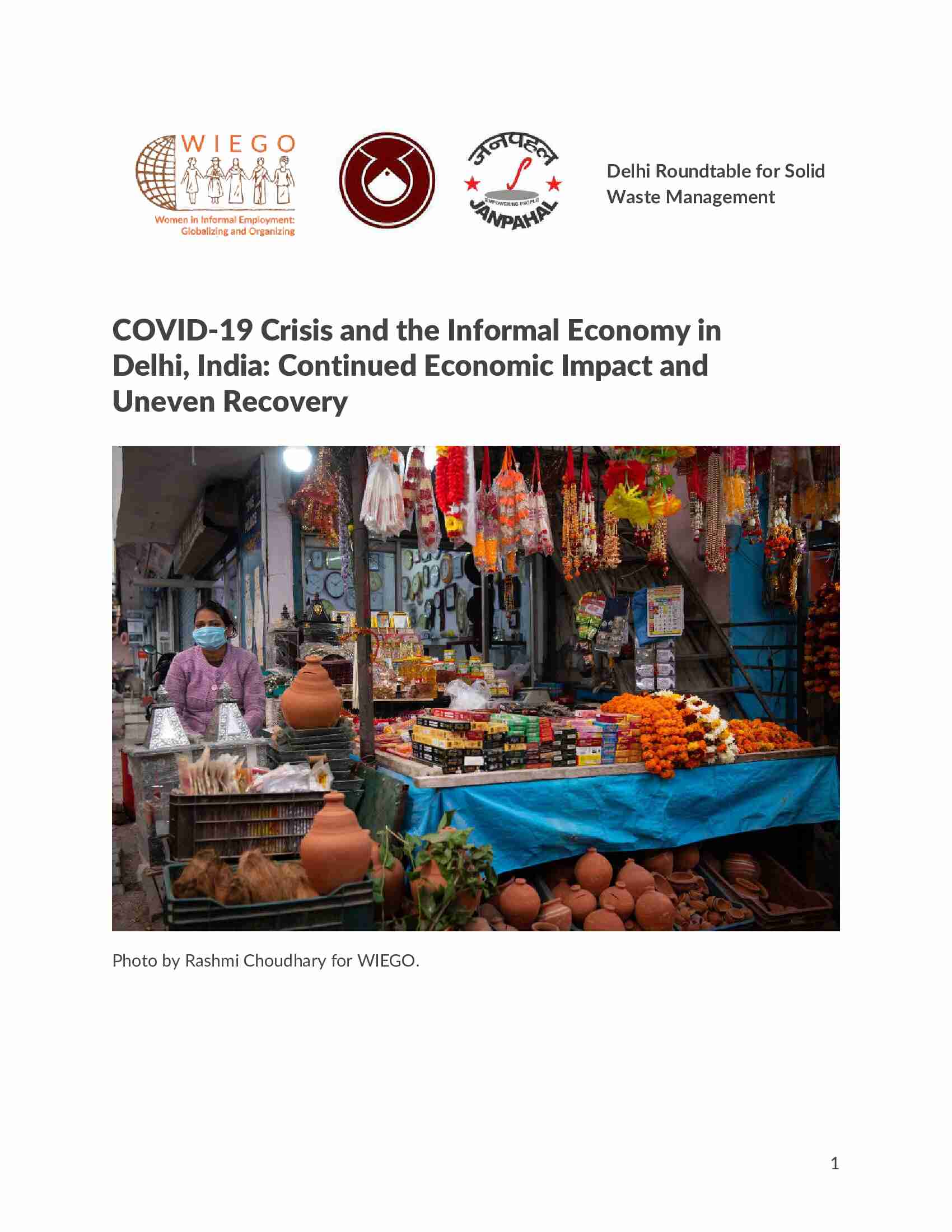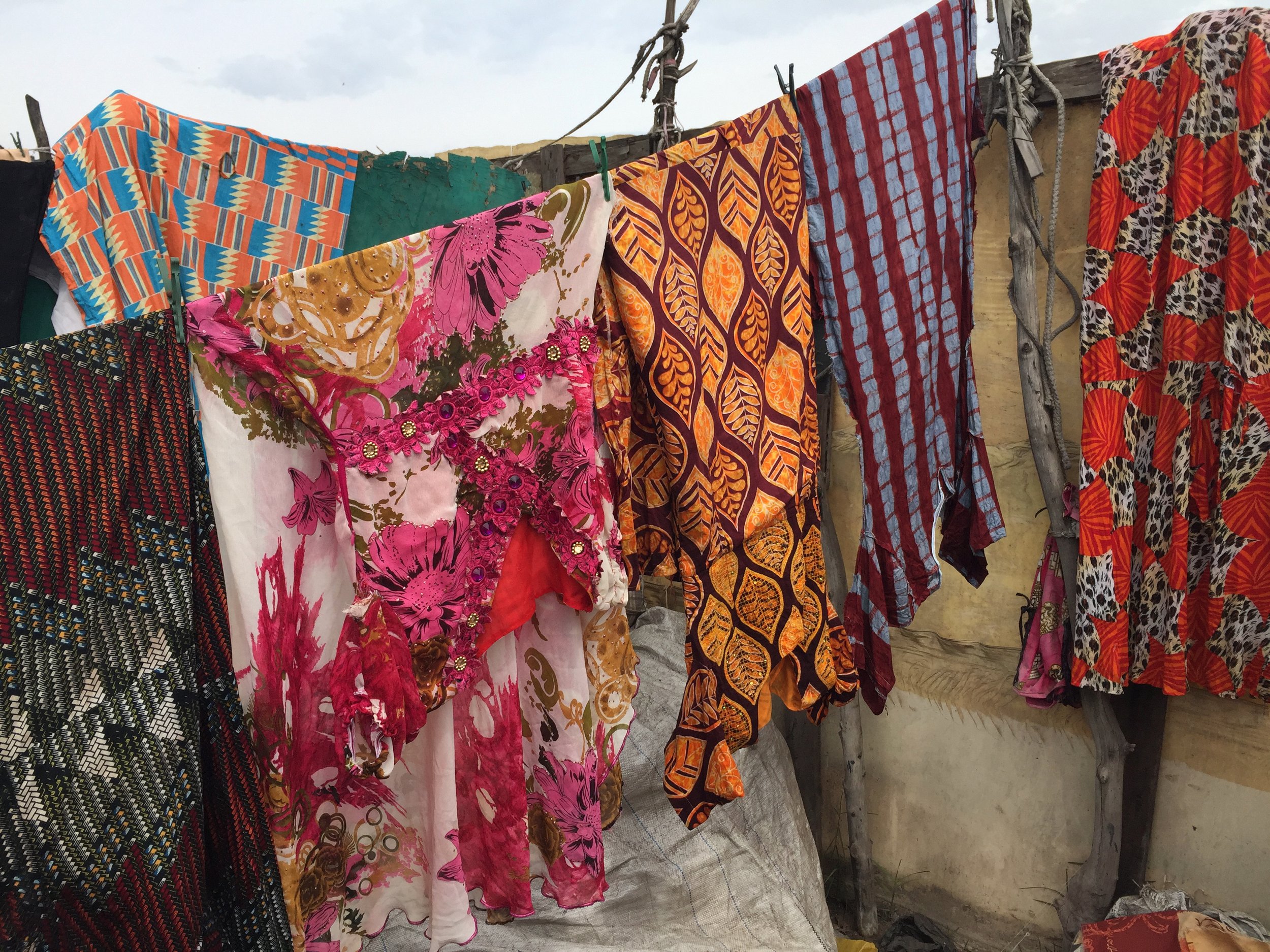COVID-19 Crisis and the Informal Economy in Delhi, India: Continued Economic Impact and Uneven Recovery
There are an estimated 4.92 million informal workers in Delhi, India, comprising over 80% of the city's total workforce. This report presents Delhi's findings from Round 2 of the WIEGO-led COVID-19 Crisis and the Informal Economy study that was conducted in mid-2021 to assess how specific groups of informal workers and their households were experiencing COVID-19 resurgences and ongoing economic strains, and to what extent (if any) they had recovered.
Among its key findings are:
There has been no recovery for informal workers: Rather than abating and reversing, the negative impact on informal workers’ livelihoods from the pandemic and associated government measures is continuing and deepening in 2021. There has been a staggered and uneven recovery among waste pickers, domestic workers, home-based workers and street vendors in average number of days worked, and earnings for workers in all sectors continue to be below pre-COVID-19 levels in all sectors.
The negative effects are disproportionately borne by women. Earnings are falling while debt is rising and workers are experiencing food insecurity. Many respondents reported hunger in their households and nearly half reported food insecurity in the form of skipped meals or reduced consumption in the month before the survey.
Government relief has been insufficient. Workers have had to cope through relying on their own savings and social networks; a point that is even more significant given that the large majority of these workers are migrants to the city.
View list of all: City/Country Level Reports

